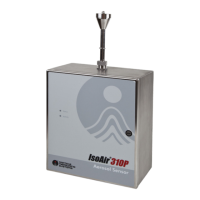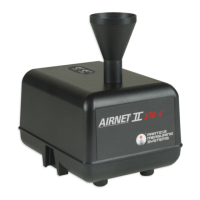How to troubleshoot Spectris Particle Measuring Systems IsoAir 310P Accessories when there is no power?
- MMr. Frederick Francis Jr.Aug 5, 2025
If the Spectris Accessories unit fails to power on, first, examine the electrical wiring and the external AC disconnect for any issues. Also, avoid plugging in the 24 VDC connector when AC power is already on, as power spikes can cause the auto-power up circuit to fail. If this has occurred, unplug the AC power, wait at least five minutes, and then plug it back in.


